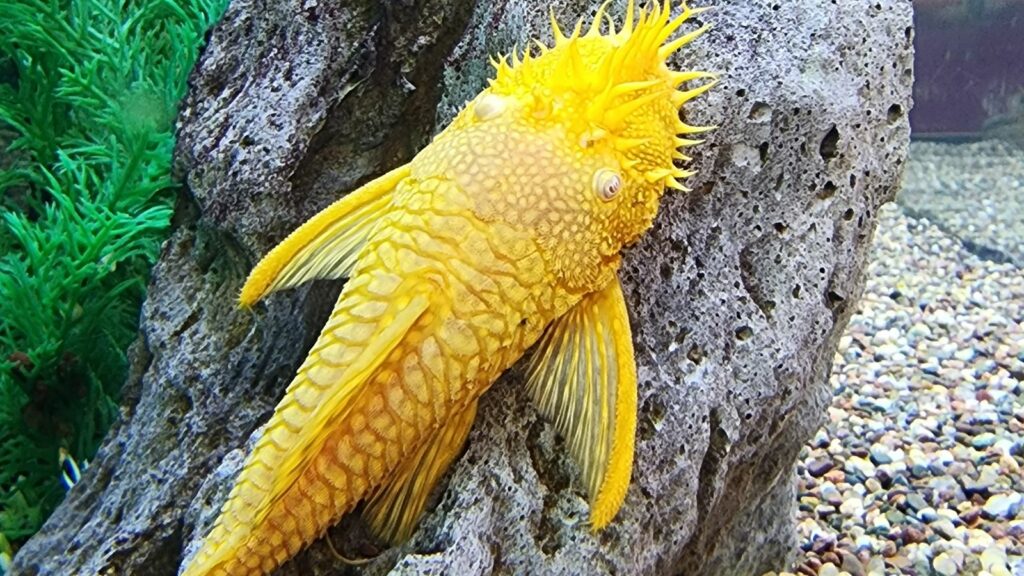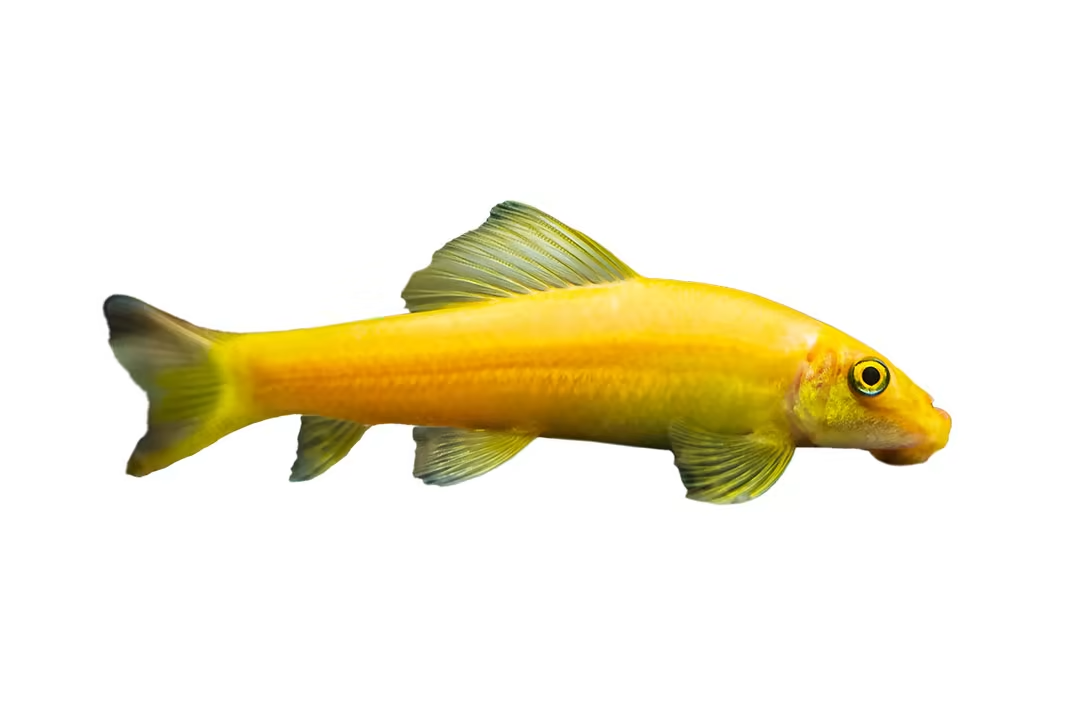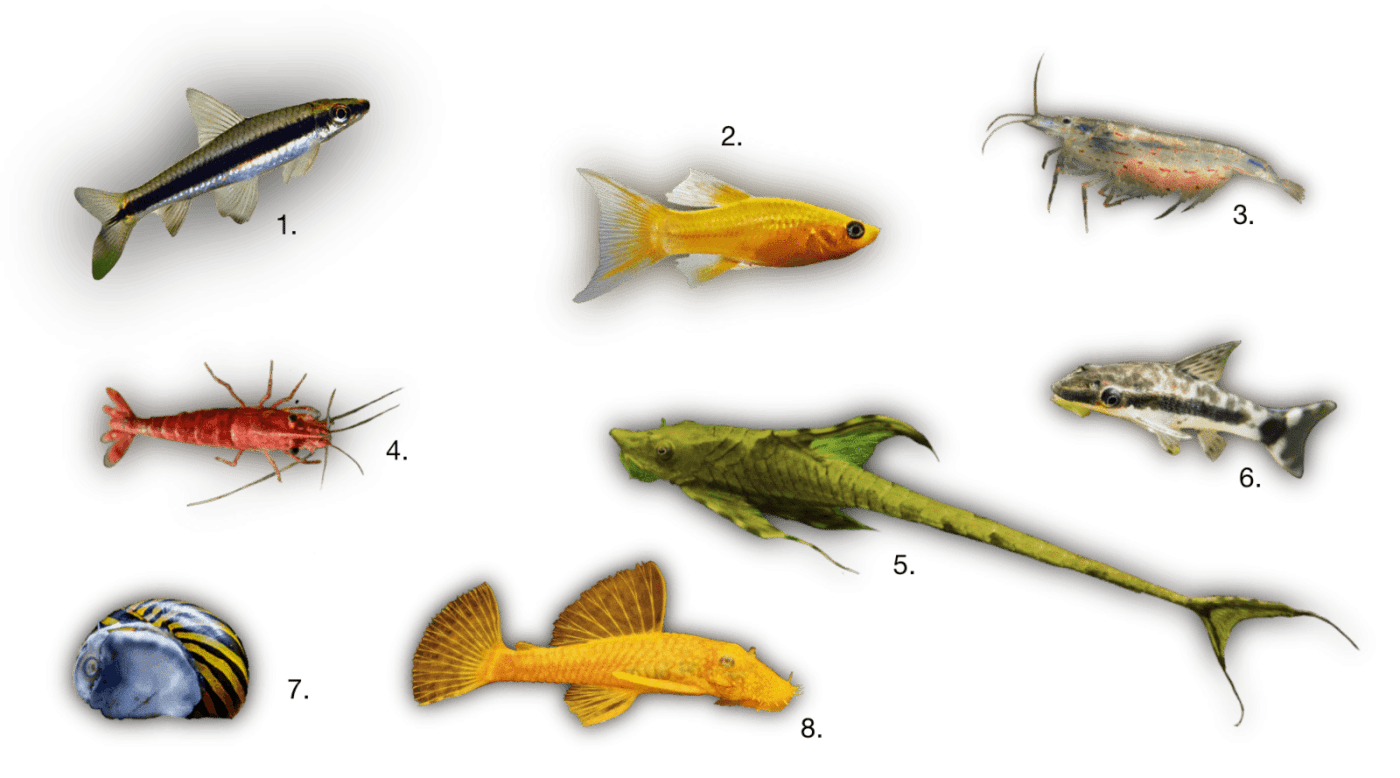Algae eaters help control algae growth in aquariums. They maintain a clean and balanced aquatic environment.
Algae eaters are essential for aquarium enthusiasts. These helpful creatures consume various types of algae, preventing overgrowth and maintaining water clarity. Popular choices include fish like Plecos and Siamese Algae Eaters, as well as invertebrates like snails and shrimp. Algae eaters not only keep your aquarium aesthetically pleasing but also support the health of other aquatic life by reducing harmful algae levels.
Selecting the right species depends on your tank size and the types of algae present. Proper research ensures that your algae eater thrives and effectively contributes to a balanced ecosystem. Regular monitoring and maintenance further enhance their efficiency.
Introduction To Algae Eaters
Algae eaters are essential in maintaining a healthy aquatic environment. These creatures consume algae, keeping tanks clean and balanced. They include various species, each with unique benefits for aquatic ecosystems and aquariums.
Importance In Aquatic Ecosystems
Algae eaters play a crucial role in aquatic ecosystems. They help control algae growth, preventing overgrowth that can harm other aquatic life. By eating algae, they maintain water quality and balance.
They also serve as a food source for larger fish and animals. This creates a balanced food web in the ecosystem. Without algae eaters, algae can grow uncontrollably, disrupting the ecosystem.
Benefits For Aquarium Health
Algae eaters provide several benefits for aquarium health. They keep the tank clean by consuming excess algae. This reduces the need for frequent tank cleaning.
They help maintain water quality. By eating algae, they prevent algae from decomposing and releasing harmful chemicals. This ensures a healthier environment for all tank inhabitants.
Below is a table showing common algae eaters and their benefits:
| Algae Eater | Benefits |
|---|---|
| Siamese Algae Eater | Effective against hair algae |
| Otocinclus Catfish | Great for small tanks |
| Nerite Snail | Consumes various types of algae |
Adding algae eaters to your aquarium can improve its overall health. They are natural cleaners and help maintain balance in the tank.

Credit: www.serenityusa.com
Types Of Algae In Aquariums
Understanding the different types of algae in your aquarium is crucial. It helps you identify the best algae eaters for your tank. Algae can vary in color, growth patterns, and impact on aquatic life.
Common Varieties
There are several common types of algae in aquariums. Each type requires different care and attention. Here are some of the most frequent varieties:
- Green Algae: This is the most common type. It often appears as green spots on the glass or plants.
- Brown Algae: Also known as diatoms, this algae is often seen in new tanks. It forms a brownish layer on surfaces.
- Blue-Green Algae: This is actually cyanobacteria. It can spread quickly and needs immediate attention.
- Red Algae: Often referred to as brush or beard algae, it looks like tufts of hair.
- Hair Algae: This type forms long, green strands that can cover plants and decorations.
Impact On Aquatic Life
Algae can have both positive and negative impacts on aquatic life. Knowing these impacts helps you manage your tank better.
| Algae Type | Positive Impact | Negative Impact |
|---|---|---|
| Green Algae | Produces oxygen | Can overgrow and block light |
| Brown Algae | Provides food for some fish | Can make the tank look dirty |
| Blue-Green Algae | None | Produces toxins, harmful to fish |
| Red Algae | None | Hard to remove, unattractive |
| Hair Algae | Provides hiding spots for fry | Can choke plants |
Managing algae in your aquarium is essential. It ensures a healthy environment for your fish and plants.
Popular Algae-eating Fish
Algae eaters are essential for keeping your aquarium clean. They help control algae growth, making the tank healthy. There are various types of algae-eating fish. Here are some of the most popular ones:
Siamese Algae Eater
The Siamese Algae Eater is a popular choice. They are known for their algae-eating abilities. These fish are peaceful and active swimmers.
- Scientific Name: Crossocheilus oblongus
- Size: Up to 6 inches
- Diet: Algae, plant matter
- Tank Size: Minimum 30 gallons
Siamese Algae Eaters are easy to care for. They thrive in community tanks.
Plecostomus
The Plecostomus, or Pleco, is another algae-eater. They are bottom-dwellers and have a strong appetite for algae.
- Scientific Name: Hypostomus plecostomus
- Size: Up to 24 inches
- Diet: Algae, plant matter, sinking pellets
- Tank Size: Minimum 75 gallons
Plecostomus are hardy and can live for many years. They need large tanks due to their size.
Otocinclus
The Otocinclus is a small but efficient algae eater. They are ideal for smaller tanks and peaceful communities.
- Scientific Name: Otocinclus affinis
- Size: Up to 2 inches
- Diet: Algae, biofilm, vegetables
- Tank Size: Minimum 10 gallons
Otocinclus are sensitive to water changes. They need stable water conditions.
Algae-eating Invertebrates
Algae-eating invertebrates are vital for maintaining a clean aquarium. These creatures help control algae growth naturally. They are essential for a balanced aquatic environment.
Shrimps And Their Roles
Shrimps are excellent algae eaters in aquariums. They are efficient and hardworking. Shrimps like the Amano shrimp consume large amounts of algae. They eat hair algae, green algae, and even leftover food. Another popular algae eater is the Cherry shrimp. They are easy to care for and breed quickly. They help in keeping the tank clean by eating algae and debris.
A table summarizing the algae-eating abilities of popular shrimp species:
| Shrimp Species | Algae Types Consumed |
|---|---|
| Amano Shrimp | Hair algae, green algae, leftover food |
| Cherry Shrimp | Green algae, biofilm, debris |
Snails As Algae Cleaners
Snails are another great option for algae control. They are slow but effective cleaners. The Nerite snail is one of the best algae eaters. They consume almost all types of algae, including stubborn ones. Nerite snails do not reproduce in freshwater, so they are easy to manage.
The Mystery snail is also popular for algae cleaning. They are peaceful and do not harm plants. Mystery snails eat algae, leftover fish food, and plant debris. They help in maintaining a clean and balanced aquarium.
- Nerite Snail: Eats almost all algae types
- Mystery Snail: Eats algae, leftover food, plant debris
Plant Allies In Algae Control
Algae can be a nuisance in any aquarium. But did you know that some plants can help control algae naturally? These plant allies work by competing with algae for nutrients. They also provide a healthier environment for your aquatic pets.
Role Of Aquatic Plants
Aquatic plants play an essential role in maintaining a balanced ecosystem. They absorb excess nutrients like nitrates and phosphates. These nutrients are what algae need to grow. By consuming them, plants leave less food for algae.
Plants also release oxygen into the water. This boosts the overall health of the tank. Healthy water conditions discourage algae growth.
Moreover, plants offer shelter for fish and other tank inhabitants. This creates a more natural and visually pleasing environment.
Best Plants For Algae Reduction
| Plant Name | Benefits |
|---|---|
| Anacharis | Grows quickly, absorbs lots of nutrients |
| Java Moss | Easy to grow, provides shelter for fish |
| Hornwort | Floats or anchors, requires low maintenance |
| Water Wisteria | Fast-growing, excellent for nutrient absorption |
| Amazon Sword | Large leaves, great for larger tanks |
Choosing the right plants can make a big difference in algae control. Fast-growing plants like Anacharis and Water Wisteria are particularly effective. They absorb nutrients quickly, starving the algae.
Java Moss and Hornwort are also great choices. They require low maintenance and provide ample hiding spots for fish. For larger tanks, Amazon Sword plants are ideal. Their large leaves help cover more area and absorb more nutrients.

Credit: www.petco.com
Creating A Balanced Ecosystem
A balanced ecosystem in your aquarium is crucial. It ensures that your algae eaters thrive. This balance also helps other fish and plants. Let’s explore how to create this balance.
Tank Conditions For Algae Control
Proper tank conditions help control algae. Here are some key factors:
- Water Temperature: Keep it between 72°F and 78°F.
- pH Levels: Maintain a pH of 6.5 to 7.5.
- Lighting: Use moderate lighting for about 8-10 hours daily.
- Filtration: Ensure your filter is strong and efficient.
These conditions help algae eaters do their job effectively. They also support healthy plant growth.
Stocking Ratios And Biodiversity
The right stocking ratio is vital. It prevents overpopulation and stress. Consider these guidelines:
| Tank Size | Number of Algae Eaters | Other Fish |
|---|---|---|
| 10 gallons | 1-2 | 2-4 small fish |
| 20 gallons | 2-3 | 4-6 small fish |
| 30 gallons | 3-4 | 6-8 small fish |
Biodiversity is also essential. Mix different species for a healthy tank. This includes:
- Algae Eaters: like Otocinclus or Siamese Algae Eaters.
- Plants: like Java Fern or Anubias.
- Other Fish: like Tetras or Guppies.
A diverse tank mimics natural ecosystems. It helps control algae naturally.
Feeding And Care Of Algae Eaters
Algae eaters are essential for maintaining a clean aquarium. They help control algae growth and keep the tank environment healthy. Proper feeding and care ensure they thrive and continue their beneficial work.
Dietary Needs
Algae eaters need a balanced diet to stay healthy. While they primarily consume algae, they also require other nutrients. Here’s a breakdown of their dietary needs:
- Algae: The primary food source, available in the tank.
- Vegetables: Offer blanched spinach, zucchini, or cucumber.
- Commercial Foods: Algae wafers and pellets provide necessary nutrients.
- Protein: Occasionally include brine shrimp or bloodworms.
Feed your algae eaters small portions twice a day. Remove uneaten food to prevent water contamination.
Tank Maintenance For Algae Eaters
A clean tank is crucial for the health of algae eaters. Follow these steps for proper tank maintenance:
- Regular Water Changes: Replace 10-20% of the tank water weekly.
- Filter Maintenance: Clean the filter monthly to ensure proper water flow.
- Algae Control: Monitor algae levels and adjust lighting if needed.
- Gravel Cleaning: Use a gravel vacuum to remove debris and waste.
A well-maintained tank supports the health and longevity of algae eaters. Keep the tank environment stable and clean.

Credit: sevenports.com
Common Challenges With Algae Eaters
Algae eaters help keep aquariums clean. They eat algae, which can overgrow. But keeping them has challenges. Learn about these common issues.
Overpopulation
Algae eaters can reproduce quickly. This can lead to overpopulation. Too many fish can stress your tank. It can also cause water quality problems.
Overpopulation can lead to:
- Increased waste
- More frequent water changes
- Competition for food
To avoid this, monitor their numbers. Remove some fish if needed. This keeps your tank balanced and healthy.
Compatibility With Other Species
Not all algae eaters get along with other fish. Some can be aggressive. Others might be too shy. Ensure they are compatible with your tank mates.
Compatibility issues include:
- Fighting with other fish
- Stress in shy species
- Bullying smaller fish
To prevent issues, research each species. Choose algae eaters that match your tank’s environment. This helps maintain peace in your aquarium.
Tips For Choosing The Right Algae Eater
Choosing the right algae eater for your aquarium is important. Different algae eaters have different needs. They also have different behaviors. Here are some tips to help you choose the right one.
Size And Temperament
Consider the size of your algae eater. Some algae eaters grow very large. Ensure your fish can fit comfortably in your tank. Check the temperament of your algae eater. Some are peaceful, while others may be aggressive. Peaceful algae eaters are good for community tanks. Aggressive ones need their own space.
Aquarium Size Considerations
Think about the size of your aquarium. A small tank cannot hold large algae eaters. Large tanks can house bigger fish. Here is a quick guide:
| Aquarium Size | Suitable Algae Eaters |
|---|---|
| 10-20 gallons | Otocinclus, Nerite Snails |
| 20-40 gallons | Siamese Algae Eater, Amano Shrimp |
| 40+ gallons | Plecostomus, Chinese Algae Eater |
Choose algae eaters that match your aquarium size. This ensures they have enough space to thrive. Also, check the water conditions they need. Ensure your tank can provide the right environment.
Integrating Algae Eaters Into Your Aquarium
Adding algae eaters to your aquarium helps keep it clean. These aquatic helpers consume unwanted algae, enhancing your tank’s appearance. Ensure proper integration for their health and the tank’s balance.
Acclimation Process
Start by floating the bag containing the algae eater in your tank. This helps match the water temperature. Let it float for 15 minutes.
Next, open the bag and add a cup of tank water. Wait another 15 minutes. Repeat this process until the bag is full of tank water.
Use a net to gently release the algae eater into the tank. Avoid pouring bag water into the tank to prevent contamination.
Monitoring And Adjustments
Observe the algae eater for signs of stress. Look for erratic swimming or hiding. Ensure it is eating algae or other provided food.
Check water parameters regularly. Algae eaters are sensitive to water quality. Ensure pH, temperature, and ammonia levels are optimal.
Adjust the tank environment if needed. Add hiding spots and plants. This makes the algae eater feel safe and reduces stress.
If the algae eater isn’t thriving, consider dietary supplements. Algae wafers are a good option. Monitor their health and adjust as necessary.
Preventing Algae Growth
Algae growth in aquariums can be a big problem. It makes the tank look dirty and unhealthy. Preventing algae growth is important to keep your tank clean. Below are some effective strategies to prevent algae growth.
Lighting Strategies
Light is a major factor in algae growth. Too much light can cause algae to grow fast. Use a timer to control the light in your tank. Set the light to be on for no more than 8-10 hours a day. Use LED lights as they are more efficient. Avoid placing the tank near windows. Sunlight can increase algae growth.
Nutrient Management
Excess nutrients in the water can lead to algae growth. Fish food and waste are main sources of nutrients. Feed your fish only what they can eat in 2-3 minutes. Remove any uneaten food from the tank. Perform regular water changes to keep nutrient levels low.
| Nutrient Source | Action |
|---|---|
| Fish Food | Feed sparingly |
| Fish Waste | Regular water changes |
Use a good quality filter to remove excess nutrients. Plants in the tank can also help. They absorb nutrients that algae would use.
Algae Eaters In Different Aquarium Setups
Algae eaters play a crucial role in maintaining clean and healthy aquariums. They help control algae growth, ensuring a beautiful and balanced aquatic environment. Understanding the different aquarium setups helps you choose the right algae eater for your tank.
Freshwater Vs. Saltwater
Algae eaters thrive in both freshwater and saltwater aquariums. Each type has specific requirements and suitable species.
| Freshwater Algae Eaters | Saltwater Algae Eaters |
|---|---|
|
|
Species-specific Requirements
Each algae eater species has unique needs. Understanding these requirements ensures they thrive in your aquarium.
- Siamese Algae Eater: Needs a well-planted tank with hiding spots.
- Otocinclus Catfish: Prefers groups and a steady algae supply.
- Plecostomus: Requires ample space and driftwood for rasping.
- Turbo Snails: Needs a stable environment with proper calcium levels.
- Sea Hare: Requires a large tank with lots of algae.
- Lawnmower Blenny: Needs a mature tank with established algae growth.
Choosing the right algae eater depends on your aquarium setup. Freshwater and saltwater tanks have different needs. Ensure you meet species-specific requirements for a thriving and balanced aquarium.
Conclusion: A Thriving Aquatic Environment
Creating a thriving aquatic environment requires careful management of algae. Algae eaters play a crucial role in maintaining clean and healthy water. They keep algae growth in check and promote a balanced ecosystem.
Summary Of Key Points
Let’s recap the essential points discussed about algae eaters:
- Algae eaters help control algae growth in aquariums.
- Different types of algae eaters target various algae species.
- Choosing the right algae eater depends on your tank size and conditions.
- Regular maintenance and feeding are vital for their health.
- A balanced diet ensures algae eaters thrive and perform well.
Understanding these points helps you maintain a cleaner tank. Healthy algae eaters contribute to a vibrant aquatic environment.
Final Thoughts On Algae Management
Effective algae management involves more than just adding algae eaters. Combining them with proper tank maintenance yields the best results. Here are some final tips:
- Monitor water quality regularly.
- Perform consistent water changes.
- Avoid overfeeding fish and algae eaters.
- Use appropriate lighting levels for your tank.
- Introduce live plants to absorb excess nutrients.
Follow these tips to keep your tank balanced. A balanced tank promotes a thriving aquatic environment.
In summary, algae eaters are essential for a clean aquarium. Combine them with good maintenance practices. This ensures a healthy and beautiful aquatic environment for your fish and plants.
Conclusion
Caring for your aquarium involves choosing the right algae eaters. These helpful creatures keep tanks clean and balanced. By selecting the best species, you ensure a healthier environment for your fish. Explore different algae eaters to find the perfect match for your aquarium.
Happy fish-keeping!
